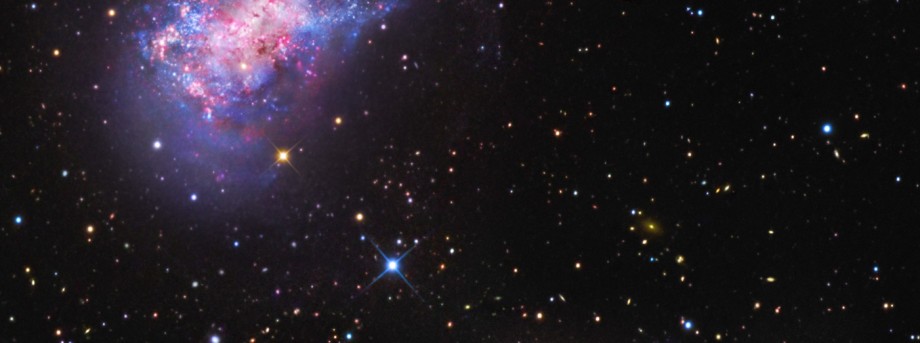The University of Nottingham
 Exchange online
Exchange online
Research Exchange
Galaxy quest

An unusual collaboration between an amateur astronomer and professional astrophysicists has shed new light on the first stage of the process by which small galaxies grow into large ones.
Astronomers believe that galaxies grow hierarchically by repeatedly merging with their peers. But the earliest stage of this process, in which one of the smallest ‘dwarf’ galaxies is cannibalised by another dwarf system, has proved very hard to study in detail, until now.
This key first step has been opened up for analysis after American amateur astronomer, Jay GaBany, who is noted for his ability to produce exceptional images of faint astronomical objects, was recruited by a large international team involving professional astronomers from Germany, the USA, Italy, Denmark, France, Spain and The University of Nottingham in the UK.
Mr GaBany used his observational skills and his own relatively-modest 0.5m telescope in California’s Sierra Nevada mountains to obtain a stunning image of one such merger happening in what astronomically-speaking is Earth’s own backyard.
His multi-colour image of the nearby dwarf galaxy NGC 4449 shows that it is in the process of gobbling up an even smaller companion. The faint smudge of the half-eaten companion was first noted in 2007 by Russian astronomers studying photographic plates, but it has taken GaBany’s painstaking 30 hours of observations to produce the first detailed image of the system — some detail of which is pictured here.
Professor Michael Merrifield of the University’s School of Physics and Astronomy said: “This kind of dwarf cannibalism is happening all over the Universe and is a key first stage in building the big beautiful galaxies that we see around us. But because these dwarf systems are so faint, this step is extremely hard to spot, and we are lucky to witness such an event so nearby. By combining the talents of amateur astronomers with the knowledge and skills of the professionals, we are able to study this important phenomenon in detail for the first time.”
The new observations support the idea that the stellar halos around many dwarf galaxies are the remnants of smaller satellites that were shredded in past merger events. The ongoing merger in NGC 4449 may also be responsible for the intense burst of star formation seen in the galaxy. Dr Aaron Romanowsky of the University of California Santa Cruz added: “This galaxy is famous for its starburst activity, and it seems we’ve found the reason for that. The gravitational interaction with the incoming galaxy has probably disturbed the gas in the main galaxy and caused it to start forming stars.”
The results of this study have been accepted for publication in Astrophysical Journal Letters.
Leave a Reply
Other News

Top prize for quantum physicist
A University of Nottingham physicist has won a prestigious medal from the Institute of Physics for […]

Zero carbon HOUSE designed and built by students comes home
Design and construct a low cost, zero carbon, family starter home, transport it to Spain, build […]